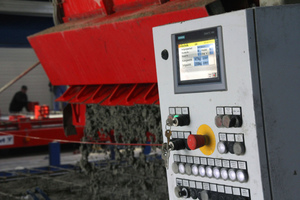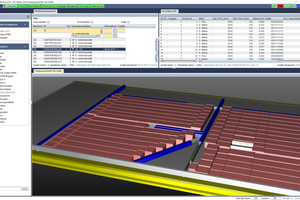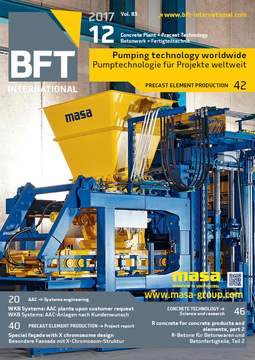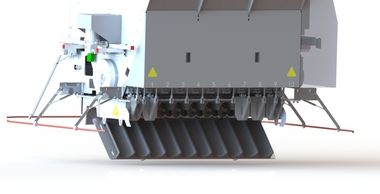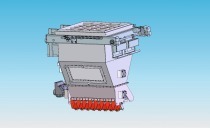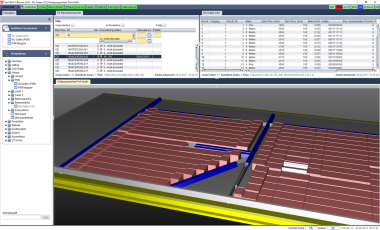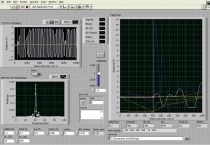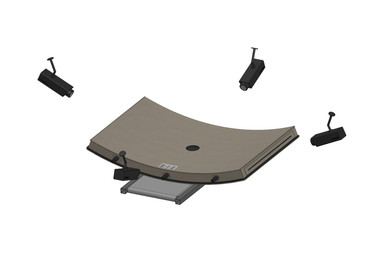New algorithm optimizes automatic concrete discharge
Many companies still rely on manual concrete discharge, due to difficult batching of the material and frequently inadequate results achieved with automatic casting. Nevertheless, automated systems can reduce concrete consumption and cut down cycle times.
UniCAM.10, Unitechnik’s master computer, purpose-developed for precast plants, now enables enhanced utilization of automatic concrete spreaders. The software, based on a new algorithm, generates a spatial image of the required concrete discharge over a surface. This image is then used as a model for the concrete spreader. Maintaining the desired layer thickness results in reduction of cycle times in production.
Manual corrections no longer necessary
Concrete is the most expensive purchase material in the production of precast floor slabs and double walls. Wasteful handling of this raw material therefore quickly leads to high production costs. If, for example, sale is scheduled of a precast slab of 60-mm thickness, but if a thickness of 63 mm is actually produced, the costs for the concrete increase by 5 %. That is why precasters must take care that only the actual amount of concrete ordered and paid for is processed.
On the other hand, the concrete must be placed in uniform thickness in order to provide a homogeneous layer. In automatic casting procedures until now, this in many cases can be achieved only by manual correction. Repeated passage of the concrete spreader over the element is also often day-to-day practice – and the result is longer cycle times in production. The new algorithm of the UniCAM 10 master computer from Unitechnik now offers the means for significantly improving the performance of automatic concrete spreaders. Manual corrections are thus no longer required. The software can also be easily connected to existing machines.
Virtual imaging optimizes production results
The new procedure enables the automatic concrete spreader to travel at a specified distance along the formwork, blockouts, and embedded frames. To make up for the lacking concrete on the edges, an adjacent narrow strip of concrete is cast. This strip is smoothed during compaction and thus ensures a uniform layer thickness across the entire element.
For implementing the technology, the UniCam.10 master computer from Unitechnik initially generates a spatial image of the amount of concrete discharge required, taking account of the properties of the concrete spreader such as casting width and the number of screw feeders and/or valves. The algorithm subsequently computes the optimal travel strategies, wheel distances, and the height of the strip and sends these parameters to the concrete spreader. The machine, by ingenious use of the screw feeders and valves, then generates a three-dimensional concrete element. With this technique, inclined elements can also be cast. In these cases, a concrete strip is built up parallel to the incline with which the top end of the element can be formed.
Minimal concrete consumption
The new distribution algorithm enables companies to optimize the traversing strategies of their machines for optimizing cycle times in their plants. In addition, the master computer ensures consistent discharge of the exact amount of concrete. The actual amount of the material needed is permanently established by weighing cells on the concrete spreaders and reported back to the software. Users benefit in this way from high transparency with regard to the amount of raw material used, and from achievement of cost optimization in production.

